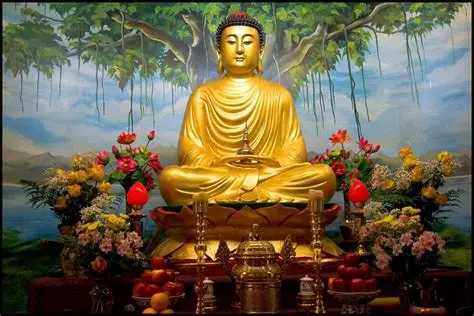India, the birthplace of Buddhism, hosts a variety of Buddhist festivals that mark key events in the life of the Buddha and honor the values of compassion, mindfulness, and wisdom. Buddhist festivals in India are more than rituals—they’re living expressions of peace, wisdom, and community. These festivals are not just religious observances—they’re moments of reflection, community, and joy that unite devotees across regions and generations.
Whether you’re a pilgrim, a traveler, or a curious observer, participating in Buddhist festivals in India offers a unique opportunity to experience the living spirit of Buddhism.
🌕 1. Buddha Purnima (Vesak)
Buddha Purnima is the most significant Buddhist festival in India. It commemorates the birth, enlightenment, and Mahaparinirvana (death) of Gautama Buddha—all believed to have occurred on the full moon day of Vaisakha (April–May).
- Celebrated in places like Bodh Gaya, Sarnath, Kushinagar, and Lumbini
- Devotees light lamps, offer flowers, and chant sutras
- Monasteries organize Dhamma talks, meditation sessions, and almsgiving
- Thousands gather under the Bodhi Tree in Bodh Gaya for prayers and teachings
🧘♂️ 2. Kathina Ceremony
Kathina is a Theravada Buddhist festival held after the three-month monastic retreat during the rainy season (October–November).
- Lay followers offer new robes and essentials to monks
- Celebrated in Sarnath, Kushinagar, and Theravada monasteries across India
- Symbolizes generosity, gratitude, and community support
- Includes chanting, processions, and merit-making rituals
📜 3. Asalha Puja (Dhamma Day)
Asalha Puja marks the Buddha’s first sermon at Sarnath, where he taught the Four Noble Truths and the Eightfold Path.
- Celebrated in Sarnath with special prayers and teachings
- Monks recite the Dhammacakkappavattana Sutta
- Lay followers engage in meditation, charity, and reflection
- Held on the full moon day of Asalha (July)
🕯️ 4. Magha Puja (Sangha Day)
Magha Puja commemorates a spontaneous gathering of 1,250 enlightened monks to hear the Buddha’s sermon at Rajgir.
- Celebrated in Rajgir, Sarnath, and Theravada centers
- Observed on the full moon day of Magha (February–March)
- Features candlelight processions, chanting, and Dhamma talks
- Emphasizes unity, discipline, and the power of the Sangha
👻 5. Ullambana (Ghost Festival)
Ullambana, also known as the Festival of Gratitude, is observed to honor ancestors and relieve suffering of departed souls.
- Celebrated in Mahayana Buddhist temples in Ladakh and Himachal Pradesh
- Families make offerings to monks and dedicate merit to ancestors
- Includes rituals, food offerings, and prayers for liberation
- Held in August–September, aligning with the lunar calendar
🏔️ 6. Losar (Tibetan New Year)
Losar is the Tibetan Buddhist New Year celebrated with great enthusiasm in Himalayan regions like Ladakh, Spiti, and Arunachal Pradesh.
- Held in February or March, depending on the lunar calendar
- Monasteries perform Cham dances, pujas, and cleansing rituals
- Homes are decorated, and families gather for feasts and prayers
- Symbolizes renewal, purification, and hope
🎭 7. Hemis Festival
Held at Hemis Monastery in Ladakh, the Hemis Festival celebrates the birth of Guru Padmasambhava, who brought Buddhism to Tibet.
- Takes place in June or July
- Features masked dances, music, and rituals
- Monks perform the Cham dance, depicting the victory of good over evil
- Tourists and devotees alike gather to witness the spectacle
🧘 Final Thoughts
Whether you’re lighting a lamp under the Bodhi Tree or watching monks perform sacred dances in Ladakh, each festival offers a moment to pause, reflect, and reconnect.
From Buddha Purnima’s enlightenment to Losar’s renewal, these festivals are timeless celebrations of the path to inner freedom.


